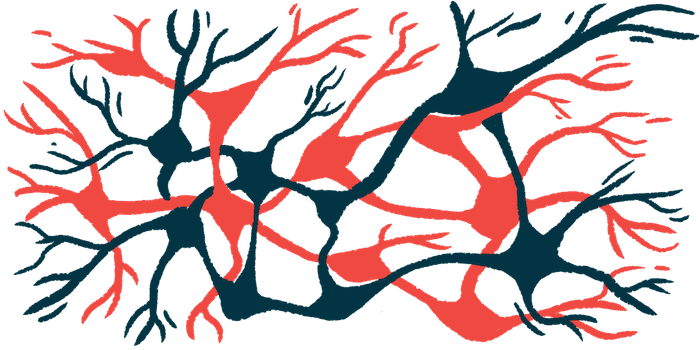New method may serve as platform for creating cell therapies for ALS
Process to turn skin cells into motor neurons detailed in 2 papers

Scientists have developed a novel method to efficiently grow motor neurons from skin cells, which may serve as a platform for creating cell therapies to treat diseases like amyotrophic lateral sclerosis (ALS).
The new method was described in two papers — one titled “Compact transcription factor cassettes generate functional, engraftable motor neurons by direct conversion” and the other “Proliferation history and transcription factor levels drive direct conversion to motor neurons” — concurrently published in the journal Cell Systems.
“Our optimized, direct conversion process generates functional motor neurons at scales relevant for cell therapies,” the researchers wrote in one of the papers.
Motor neurons are the specialized nerve cells that control voluntary movement in the body. In ALS, these cells sicken and die, ultimately impairing communication between the brain and muscles, and driving disease symptoms.
Researchers have long been interested in the possibility of taking easily-accessible cells like skin cells and growing them into healthy motor neurons. In theory, this could generate cells that closely resemble the motor neurons in the brains of people with diseases like ALS, which could serve as good research models. The cells could also be transplanted into the brain and spinal cord to help treat motor neuron diseases such as ALS.
Researchers sought to develop a more effective platform for cell therapies
Scientists previously have shown that it is possible to convert skin cells into motor neurons. However, available methods for doing so have notable drawbacks. One strategy is to convert skin cells into stem cells, and then provide some chemical cues to those stem cells to promote their differentiation into motor neurons. This process is slow, however, and many cells don’t make the full conversion.
An alternative strategy is to directly convert skin cells into motor neurons, bypassing the intermediate stem cell step. This has been done before, but previous strategies were extremely inefficient, with less than 1% of cells making the transition.
Cell conversion strategies generally work by delivering to cells genes encoding specific transcription factors, which are proteins that regulate the activity of many different genes in the cell. By delivering the right combination of transcription factors, scientists can effectively turn on all the genes that will lead a skin cell to transform into a nerve cell.
Delivering genes in this way is usually done with viral vectors — essentially viruses that have been engineered to deliver a particular gene without causing a problematic infection.
In the past, protocols have generally delivered each transcription factor with its own specific viral vector, frequently requiring more than half a dozen different vectors. This is one of the reasons that these protocols often lack efficiency, as the conversion will only happen if the cell receives transcription factors from each of the different vectors.
In this new work, the team — led by scientists at the Massachusetts Institute of Technology (MIT) — conducted a series of experiments to zero in on the minimum number of transcription factors needed to induce skin cells to grow into motor neurons. They found that a set of three transcription factors, specifically NGN2, ISL1, and LHX3, was sufficient to induce the conversion.
The researchers also conducted detailed tests to examine in detail the effects of these transcription factors under different conditions. A notable finding from their experiments is that the transcription factors worked best in cells that were highly proliferative — that is, rapidly growing and dividing to make new cells.
“If you were to express the transcription factors at really high levels in nonproliferative cells, the reprogramming rates would be really low, but hyperproliferative cells are more receptive. It’s like they’ve been potentiated for conversion, and then they become much more receptive to the levels of the transcription factors,” Katie Galloway, PhD, coauthor of the studies at MIT, said in a university news story. Galloway is a professor of biomedical engineering and chemical engineering.
More study needed before approach can be attempted in humans
Based on their observations, the researchers created a system for skin cell to motor neuron conversion using only two vectors: one vector that delivered all three transcription factors, and a second vector delivering genes that would trigger the cell to rapidly grow and divide. The researchers tested several different viral vectors, zeroing in on the ones that gave the best results.
Using just these two vectors, the researchers were able to convert mouse skin cells into motor neurons with an efficiency greater than 1,000% — meaning that, on average, more than 10 motor neurons were created for each skin cell used at the start. The process also worked in human cells, though it was notably less efficient, at about 10% to 30%.
“We were able to get to yields where we could ask questions about whether these cells can be viable candidates for the cell replacement therapies, which we hope they could be. That’s where these types of reprogramming technologies can take us,” Galloway said.
This two-vector approach could turn skin cells directly into motor neurons in about five weeks, which is notably faster than protocols that turn skin cells into stem cells before growing them into neurons, according to the researchers. The team also demonstrated that motor neurons grown in this manner could survive after being transplanted into the nervous systems of mice, effectively incorporating within the existing nerve cells of the mouse model.
We were able to get to yields where we could ask questions about whether these cells can be viable candidates for … cell replacement therapies, which we hope they could be. That’s where these types of reprogramming technologies can take us.
In one paper, the researchers concluded that “these data show that our conversion protocol can directly convert donor cells at numbers sufficient for [brain and spinal cord] grafting and that grafted [motor neurons] survive at high rates … and integrate with neural tissue in the mouse brain.”
The team said that motor neurons grown in this way could potentially be used for cell therapies in diseases like ALS, though they stressed that further studies will be needed before this approach can be attempted in humans.
In particular, more safety testing is needed, the scientists noted, as the genes they used to induce the cells into a highly proliferative state can also in some instances cause unregulated cell growth that leads to cancer.
Ultimately, however, the scientists say their method shows the potential to “improve safety and efficacy of gene- and cell-based therapies” for ALS and other diseases.








